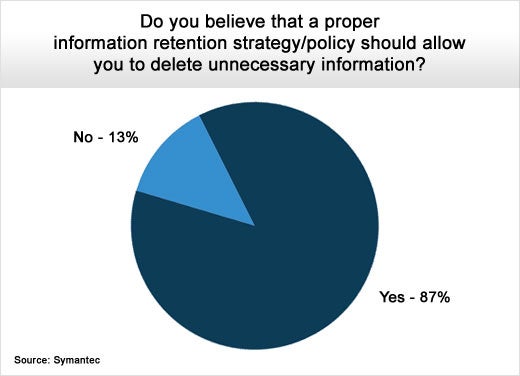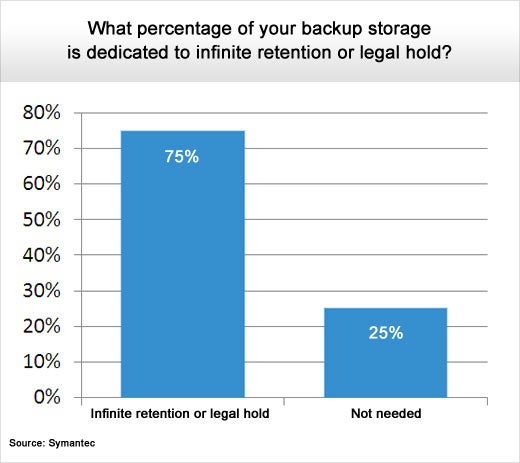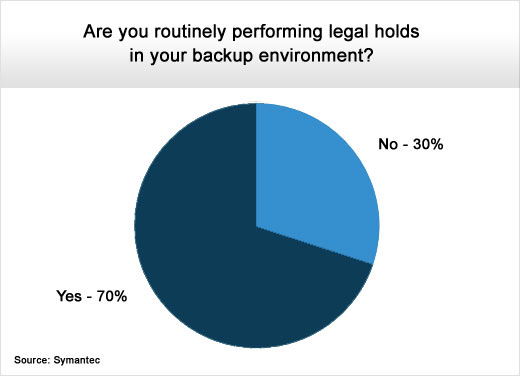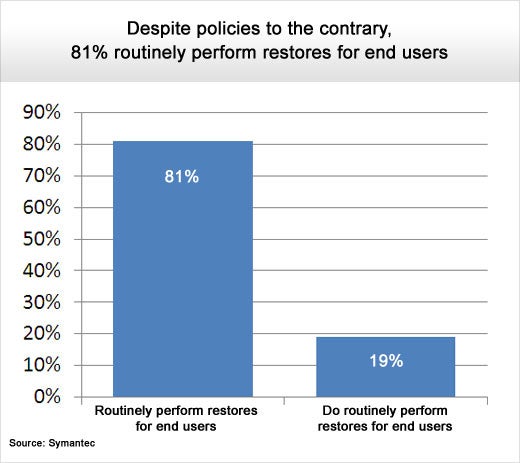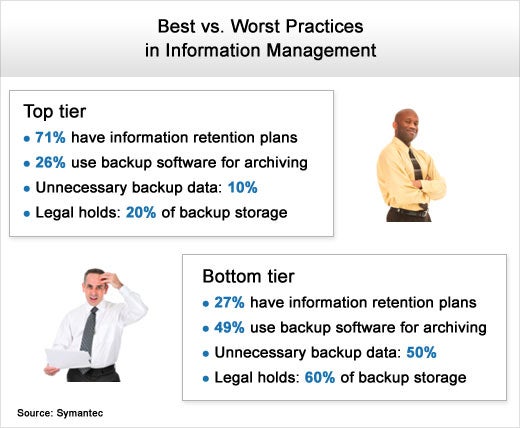
But a closer look at the data management practices of 1,680 global IT organizations with 500 employees or more, conducted by Symantec, finds that far too many of them don’t have any real strategy when it comes to backup and recovery. In fact, many of them can’t distinguish between information they should be backing up because the organization may need to recover it quickly, and information that simply need to be archived to meet legal requirements.
The end result is that IT organizations are in many cases trying to back up huge amounts of data that for the most part would be better handled by an archiving system.
The challenge facing IT organizations might not be the amount of data they need to manage, but rather the lack of a rational approach to solving the problem that winds up with IT organizations using the wrong tools for the wrong job.
Click through for results of a survey conducted by Symantec focusing on backup and recovery practices.
87 percent believe that proper information retention strategy should allow them to delete unnecessary information, but less than half (46 percent) have a formal strategy.
75 percent of backup are on infinite retention or legal hold. That means 25 percent are not needed.
70 percent perform legal holds using backup software. 25 percent preserve the entire backup set, and 45 percent of all backups are generated by legal holds.
Despite policies to the contrary, 81 percent routinely perform restores for end users.
A failure to plan on how to use limited backup resources plagues many IT departments.



